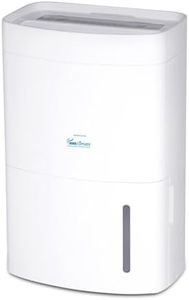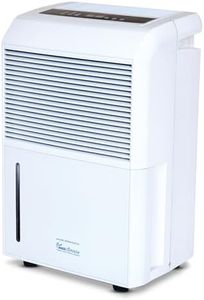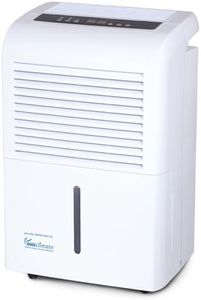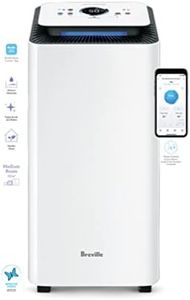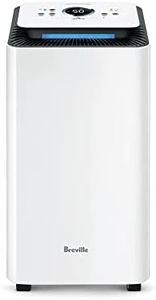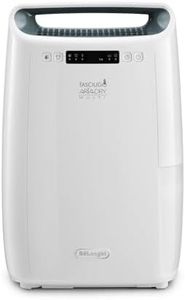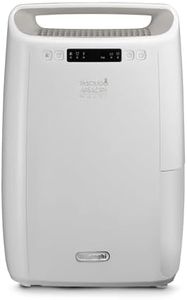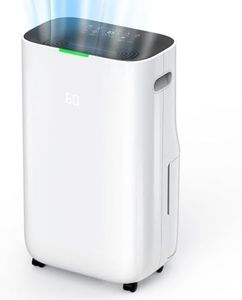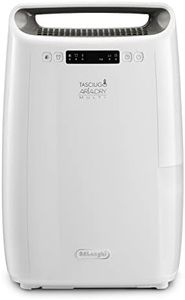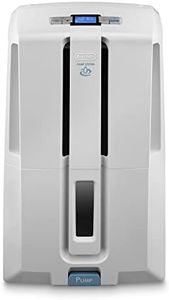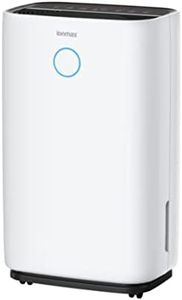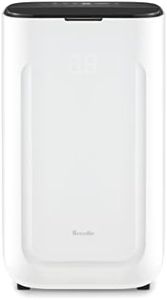We Use CookiesWe use cookies to enhance the security, performance,
functionality and for analytical and promotional activities. By continuing to browse this site you
are agreeing to our privacy policy
10 Best Commercial Dehumidifiers
From leading brands and best sellers available on the web.Buying Guide for the Best Commercial Dehumidifiers
Selecting a commercial dehumidifier is all about matching the device’s capabilities to your needs—whether you’re drying out a warehouse, preventing mold in a large basement, or protecting sensitive equipment. Commercial dehumidifiers are built for more demanding environments than home units, so it’s important to weigh their power, size, and durability against the space and moisture problem you’re trying to tackle. Think about the area you need to cover, the nature of your business or facility, and how often the dehumidifier will run. Also consider how convenient you want it to be in terms of setup, maintenance, and moving it around if needed.Dehumidification Capacity (Pints per Day)Dehumidification capacity tells you how much water a unit can remove from the air in a day, usually measured in pints. This spec is crucial because it determines whether the dehumidifier can handle the moisture levels in your space. For smaller rooms or those with mild humidity, a lower capacity (40–70 pints/day) might suffice. Busy warehouses, large basements, or spaces with persistent dampness may require mid-range (70–120 pints/day) capacity. Extremely large industrial areas or major flooding situations can call for the highest capacities (over 120 pints/day). Estimate the size of your area and consider its moisture level—for very damp or wet environments, always go for a higher capacity to ensure effective humidity control.
Coverage AreaCoverage area describes how much space a dehumidifier is designed to handle, often listed in square feet. This is important because a dehumidifier that's too small for a space won't work efficiently. Coverage areas typically range from about 1,000 square feet for compact units up to 8,000 or more for heavy-duty machines. To pick the right one, measure your space and choose a dehumidifier rated for at least that size—always round up a bit to make sure it can keep up with moisture in all corners, especially if you have obstacles or many rooms.
Drainage OptionsDrainage options determine how water removed from the air exits the machine. Commercial dehumidifiers usually let you collect water in a tank, hose it out using gravity, or pump it out to a drain. Manual tank removal might be okay for small spaces or occasional use, but it’s less suitable for round-the-clock operation. Hose drainage is more convenient for continuous use if you have a nearby floor drain, while an internal pump lets you discharge water upwards or over a long distance, great for basements or where no drain is close by. Match your choice to your space setup and how often you want to check on the machine.
PortabilityPortability refers to how easily a dehumidifier can be moved or repositioned. Some commercial models are large and heavy but add features like handles, wheels, or compact designs. If you need to move your dehumidifier between job sites or rooms, choose one designed with sturdy handles and large wheels. If it's going to stay put in one spot, portability matters less, but for cleanup crews or multi-room spaces, easy movement saves time and effort.
Durability and Build QualityDurability concerns how well the machine stands up to heavy use in tough environments. Commercial settings often involve dust, frequent handling, or temperature swings. Look for robust, corrosion-resistant materials and solid construction. Metal housings last longer than cheap plastic, and easy-access panels help with repairs. If your dehumidifier will face challenging conditions, prioritize build quality so it keeps working smoothly for years.
Control Features and HumidistatControl features include things like automatic humidistats (which sense and adjust to the room’s humidity), programmable timers, and digital readouts. These features give you easier and more accurate control over the indoor climate. An automatic humidistat means the machine only runs as needed, saving energy and maintenance. Basic models may need you to adjust them more often, while advanced ones let you set and forget. If you want to minimize hands-on attention, look for smarter controls and automation.
